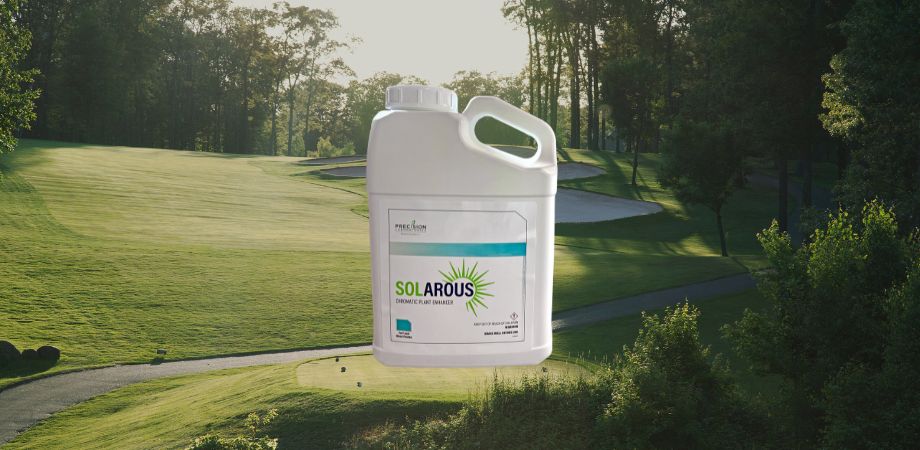Winterkill refers to turfgrass loss that happens in the winter. It can damage grass in cool-season, warm-season, and transition zone geographies. Several conditions cause winterkill, but this blog post will focus specifically on crown hydration and winter desiccation. We’ll explore how to prevent these issues before winter even starts.
Crown Hydration
Generally, crown hydration occurs on greens and other short turfgrass on semi-frozen soils. As the turf is breaking dormancy in late winter and early spring, it is most susceptible. With partially frozen soils, water cannot percolate to drains and saturates the surface instead.
If the temperature suddenly drops to around 20°F after the soil thaws, the crown cells can flash freeze and rupture. That process kills the plant. Young, newly growing tissue is more sensitive to rapidly changing temperatures. Poa annua is most susceptible to crown hydration and will often be the only species affected in a mixed putting green with creeping bentgrass.
Although you can’t completely eliminate the threat of winterkill from crown hydration, you can take some preventative measures:
- Treat turf in late fall with fertilizers that are low in nitrogen and high in potassium. This nutrition will help the plant convert energy to carbohydrates and starch, thus strengthening the plant coming out of winter.
- Solid tine aerate to remove excess surface moisture.
- Eliminate low areas on the greens that tend to gather and hold water. Surface contouring is a helpful practice.
- With your last spray application, incorporate a low rate of penetrant to help prevent crown hydration. A product such as Hydro-Pak Command or Aqueous can help reduce surface tension.
Winter Desiccation
Snow can be a good thing for turf because it acts as insulation. Winter desiccation occurs when turfgrass does not have moisture in the way of snow cover or other protections during wintertime, leaving it exposed to dry wind and low temperatures. These conditions basically freeze-dry the turf.
Winter desiccation can affect creeping bentgrass, Poa annua, and even bermudagrass. Elevated areas are extremely susceptible to damage. Take these precautions to help guard against winterkill from desiccation:
- Ensure the turf has adequate fertility with high ratios of potassium as it goes into dormancy. That way, it can build up energy before going to bed.
- Use covers when applicable. While covers are not used as much in the transition zone and South as in the North to help prevent winterkill, they can keep the cold temperatures and wind away from the turf. Be cautious, though, as covers are labor-intensive. If you get warm stretches in the winter, you should pull the covers back and let the turf breathe. Otherwise, they’ll create a warm, moist environment that can cause diseases, especially snow mold.
- Use wetting agents (penetrants or hydration agents) to ensure turf has sufficient moisture, especially before you shut off your irrigation system. Wetting agents will help prevent desiccation. A fall wetting agent application will maximize any natural precipitation you receive, rain or snow. On heavier or poorly drained soils, it will aid in allowing excess moisture to get through the soil profile, keeping it at the proper ratio and removing water from the surface during periods of freezing and thawing.
Grass only comes out as good as it went to bed. If it goes to bed weak in the fall, it will come out even weaker in the spring. If you put everything to bed properly now, you’re more likely to come out better off in the spring.












